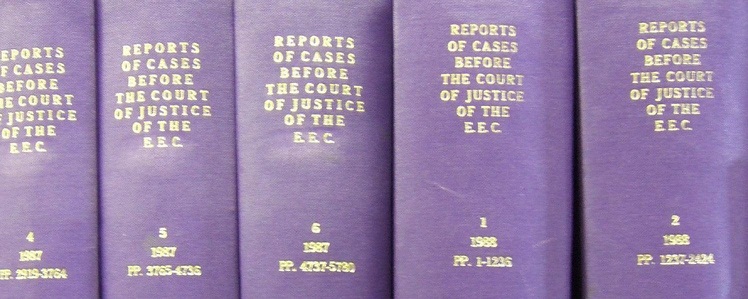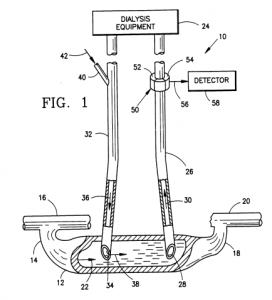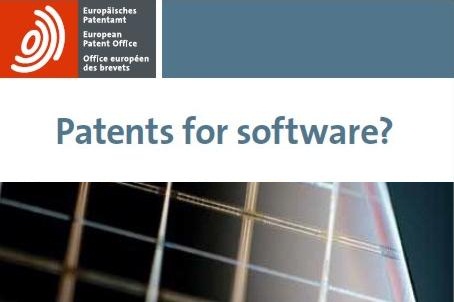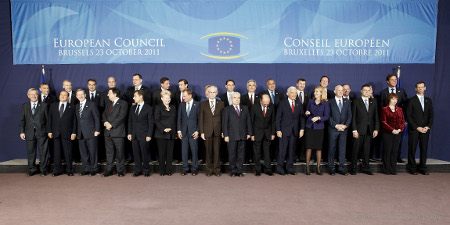Anti-Patent Campaigners put their trust in François Hollande as EU Council attends to Unitary Patent Court again

The newly elected President of France, François Hollande promising "change". Will he be the first anti-patent campaigner governing an EU state?
Now that François Hollande took office as the new President of France after his marginal victory in the French presidential elections this May, he will now introduce himself to official EU policy on his first Competitive Council meeting on May 31/June 1. The draft agenda for this meeting (cf. item 19), reading “Draft agreement on a Unified Patent Court and draft Statute – Political agreement“, electrifies observers of and parties involved the ongoing European patent legislation saga (see also press release, middle of page 5).
In recent months the upcoming French elections brought the negotiations on the Unified Patent Court Agreement to a complete standstill, as the dynamics between the French, British and German heads of govenment and the general political climate is a crucial factor in this legislative process, especially since the only serious and realistic candidates for the attractive seat of the new UPC Central Division are Paris, London, and Munich and it is frequently announced through official channels that this question is the only remaining open issue.
The EU Council expressed already in January this year its believe that a final agreement can be reached in June 2012 (see official statement) and it was the President of the European Council, Herman Van Rompuy, who clarified in a recent letter that he hopes (or expects) the remaining issues to be sorted out at next week’s Competitiveness meeting:
“[...] This deal is needed now, because this is an issue of crucial importance for innovation and growth. I very much hope that the last outstanding issue will be sorted out at the May Competitiveness Council. If not, I will take it up at the June European Council.”
But IP matters will not become easier in Europe with Mr Hollande, given his apparent openness to positions of critics of the current patent system. In fact, some of the answers (pdf) of Ms Fleur Pellerin (@fleurpellerin), responsible for the digital economy in Hollande’s campaign team, on a tendentious pre-election questionnaire of French anti software patent group “April” appear as if the socialist candidate for president (or his spokeswoman) was one of the ideological leaders of that pressure group:
The patentability of software would induce a partitioning of innovation that would be harmful to the ecosystem seen in its digital together. I am therefore opposed to the patenting of software.
Articles 6 to 9 of the Unitary Patent Regulation relate to substantive patent law. They regulate the right to prevent direct and indirect use of the invention (Art. 6 and 7, respectively), the limitation of the effects of the ‘Unitary Patent‘ (Art. 8) and exhaustion of the rights conferred by the ‘Unitary Patent‘ (Art. 9).
As the question of which EU member state will receive the Central Division of the EU Unified Patent Court (see here, here, and here) is officially seen as the only remaining obstacle to the Unified Patent Court Agreement, the Unitary Patent Regulation already received green light from the EU Parliament’s legal committee (JURI) in late December (see press release) so that the EU Council already began to linguistically finalise the Regulation text in early January.
THE DISPUTE ON ARTICLES 6 TO 9
Even so, a strong and illustrious ‘opposition movement’ of legal professionals and their associations (e.g. EPLAW and Jochen Pagenberg, European Patent Judges and Sir Robin Jacob, Professor Krasser, CIPA), industry representatives (e.g. ICC, IP Federation), and a few politicians (e.g. JURI member Cecilia Wikström (SE, ALDE) [1, 2, 3] and UK IP Minister Baroness Wilcox) demanded Articles 6 to 8/9 to be removed from the Regulation to prevent substantive patent law from becoming subject to review by the European Court of Justice via referral questions according to Article 267 TFEU.
Recently the European Patent Office (EPO) has published Decision T 1695/07 – 3.3.07 of one of the Boards of Appeal dealing with the exception from patentability under Article 53(c) EPC. The catchword reads as follows:
I. A blood manipulation process involving the continuous removal of blood from a patient, its subsequent flowing through a circulating line of an extracorporeal circuit and its re-delivery to the patient is a method of treatment of the human body by surgery excepted from patentability under Article 53(c) EPC. It does not belong to the kind of methods which should not be covered by the exception clause according to the “narrower understanding” suggested by the Enlarged Board of Appeal in decision G 1/07, because the process is not performed in a “non-medical, commercial environment” and cannot be considered as a “minor intervention” being performed on “uncritical parts of the body” (Reasons, 8 to 10).
II. Such an in vivo process requires “professional medical expertise” and belongs to the kind of interventions representing the “core of the medical profession’s activities”, even when performed by paramedical support staff (Reasons, 11).
III. Even when the process is carried out with the required medical professional care and expertise, it involves ”substantial health risks” for the patient. A health risk is considered to qualify as “substantial” whenever it goes beyond the side effects associated with treatments such as tattooing, piercing, hair removal by optical radiation, micro abrasion of the skin as mentioned in G 1/07. A factual analysis of absolute or relative risks and their likelihood of occurrence based on objective evidence is hardly feasible and should therefore not be required.
In the Decision the Board argues the claimed process does not fall under the “narrower understanding”, i.e. does not belong to the kind of methods which should not be covered by the exception clause according to the criteria developed in G 1/07 because of it comprises the steps of
- “continuously removing blood from a downstream location in the shunt (12) …” and
- “delivering the removed blood flowing in said circulating line by way of an outlet connected to an outlet side of said circulating line to an upstream location of said shunt, …”.
Furthermore and again according to the Board, It has been established that these steps are invasive and represent a substantial physical intervention on the body which requires professional medical expertise to be carried out and which entails a substantial health risk even when carried out with the required professional care and expertise. ccording to the established jurisprudence of the Boards of Appeal, a multi-step method falls under the exception clause of Article 53(c) EPC, if it includes at least one feature that constitutes a method step for the treatment of the human body by surgery. The possible technical contribution of the invention as mentioned by the proprietor appellants is not a criterion to be taken into consideration in this context.
During the past 15 years the Boards of Appeal of the EPO have developed a consistent case law as to the pragmatic problem/solution approach for assessing patentability pursuent Art 52 -57 EPC. In our earlier overview on
EPO case law regarding patentability of software inventions,
to which this posting is meant as a more practical continuation, we briefly characterised the EPO’s main examination approach:
[M]odern case law [of the EPO Boards of Appeal on software inventions], especially the suggestion in T 1173/97 that the “technical contribution” is an inventive step consideration and the observation in some early cases (e.g. T 38/86 and T 65/86) that the “inventive contribution” must lie in a “field of technology”, almost naturally lead to the problem-solution approach as developed in T 641/00 (COMVIK) and T 258/03 (Hitachi) and theoretically justified in T 154/04 (Duns).
This approach nowadays is the crucial test to differentiate between a technical contribution implementing a non-technical concept (e.g. a business method) and an inventive contribution in a technical field (e.g. an embedded control software). Its general idea is that only the technical features of a claim may be taken into account for assessing inventive step, while the non-technical features form a basis for formulating the underlying problem, with the effect that the non-technical features may render the technical solution obvious.
This approach is widely accepted among practitioners as enhancing legal security for applicants since it represents a comprehensible benchmark against which EPO decisions are subject to verifiction.
As reported earlier, there is a strong desire of (parts of) industry [1, 2] and patent professionals [1, 2, 3], politically supported by JURI member Wikström and UK IP Minister Baroness Wilcox, to remove Articles 6 to 8 dealing with substantive patent law on patent infringement from the proposed Regulation. The fears of those groups are that otherwise substantive patent law would become part of EU legal order causing costs, delays, legal uncertainty. A related resolution of the European Patent Lawyers Association EPLAW expressed such concerns recently in a rather pointed way:
If one wants a really unattractive, inefficient, unpredictable and probably extremely expensive patent court system, then we will get it; one must only give the ECJ a chance to receive as many referrals in patent law as possible.
If one wants to see substantive patent law in Europe to be decided by judges without any solid knowledge and experience in this field, then one must involve the ECJ whenever possible.
And if somebody intended to lay a solid ground for failure of this – at some time very promising – project, then he will probably succeed.
Now there is evidencs (see e.g. this tweet) suggesting that Ms Wikstrom has lost the battle over Articles 6 to 8, so that the provisions dealing with substantive patent law on patent infringement will remain part of the Unitary Patent.
Warsaw, December 22, 2011: The Day Of Initialling The EU Unified Patent Court
Document 17539/11 authored by the Polish EU Presidency, titled Draft Agreement on the creation of a Unified Patent Court – Guidance for future work and directed to Permanent Representatives Committee ( COREPER Part 1) unveils under item 11 thereof:
The Presidency announced its intention to organise the initialling ceremony whereby the text of the Agreement could be finalised in Warsaw on 22 December 2011. The Presidency considers that the Member States should be able to arrive at a political agreement on the text of the Agreement at the meeting of the Competitiveness Council on 5 December 2011 on the basis of this set of compromise proposals, despite the fact that some issues of political importance could be left to be agreed at a later stage, but before the signature of the Agreement.
Well this appears to be quite big an issue. Why? Well, … in Document 16741/11 titled Draft agreement on a Unified Patent Court and draft Statute – Revised Presidency text we see current wording of Article 5 (1a) printed as follows:
(1a) The central division shall have its seat in [...]. The contracting Member State hosting the central division shall provide the necessary facilities for that purpose.
And, in a corresponding way, current wording of Article 7 (4) reads:
(4) The Court of Appeal shall have its seat in [...].
It is to be understood that the the initialling ceremony scheduled to happen in Warsaw on December 22 would be pointless if there isn’t a finalsed text of the entire Agreement ready for signing .. without those ellipsis in Articles 5 (1a) and 7 (4).
With other words: A political decision as to how to locate the seat of central portions of the UPC system is due to well ahead of the planned ceremony in Warsaw. For more details on the timetable, see also Volker Metzler’s post on visaepatentes.com.
Continue reading »
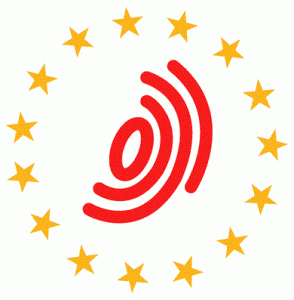 It has become increasingly difficult to kept a clear view on what exactly is discussed in the ongoing discourse on the various proposals and drafts for a European Patent with unitary effect (i.e. the Unitary Patent) and a Unified Patent Court.
It has become increasingly difficult to kept a clear view on what exactly is discussed in the ongoing discourse on the various proposals and drafts for a European Patent with unitary effect (i.e. the Unitary Patent) and a Unified Patent Court.
In order to retain a clear overview on the essential legal and political concepts of those two drafts, I extracted and sketched their main features based on the “Proposal for a Regulation [...] implementing enhanced cooperation in the area of unitary patent protection” dated 23 June 2011 (Document 11328/11) and the “Draft Agreement on a Unified Patent Court and draft Statute” dated 19 October 2011 (Document 15539/11). Please enjoy.
 According to Chapter II PCT (International Preliminary Examination) the International Preliminary Examination Authority (IPEA) draws up the International Preliminary Examination Report (IPER) which is forwarded to the elected national patent Offices upon national phase entry. Since most national Offices use the IPER as a basis for their substantive examination, it is vital for the applicant that a positive IPER is established.
According to Chapter II PCT (International Preliminary Examination) the International Preliminary Examination Authority (IPEA) draws up the International Preliminary Examination Report (IPER) which is forwarded to the elected national patent Offices upon national phase entry. Since most national Offices use the IPER as a basis for their substantive examination, it is vital for the applicant that a positive IPER is established.
Based on Rule 66.4 PCT, reading
Additional Opportunity for Submitting Amendments or Arguments:
(a) If the International Preliminary Examining Authority wishes to issue one or more additional written opinions, it may do so, and Rules 66.2 and 66.3 shall apply.
(b) On the request of the applicant, the International Preliminary Examining Authority may give him one or more additional opportunities to submit amendments or arguments.
the EPO now announced an important procedural change for international applications entering Chapter II PCT before the EPO functioning as IPEA (see Notice from the EPO dated 31 August 2011). According to that revised practice, the EPO obtains discretion to issue additional written opinions before establishing the IPER, either on its own initiative or upon applicant’s request. This will give applicants more control and influence and better chances to enter the national phase with a positive IPER.
Compatibility Of Draft Agreement On Unified Patent Court with EU acquis
On September 20, 2011, the General Secretariat of the Council of the European Union has filed Document 14191/11 titled Compatibility of the draft agreement on the Unified Patent Court with the Union acquis. It was classified “LIMITE” but after having filed a request on the basis of Regulation (EC) No 1049/2001 of the European Parliament and of the Council regarding public access to European Parliament, Council and Commission documents and the specific provisions concerning public access to Council documents set out in Annex II to the Council’s Rules of Procedure (Council Decision No 2009/937/EU, Official Journal L 325, 11.12.2009, p. 35) the General Secretariat has come to the conclusion that I may have access to this document. Hence, I expect this Document to become accessible in the Register very soon.
The Document conveys a non-paper from the Commission services who have analysed the compatibility of the draft agreement on the Unified Patent Court (UPC) with the Union acquis. In particular, they have checked the Draft against:
- Regulation (EC) No 44/2001 on jurisdiction and the recognition and enforcement of judgments in civil and commercial matters (Brussels I)
- The Convention on jurisdiction and the recognition and enforcement of judgments in civil and commercial matters (Lugano Convention)
- Regulation (EC) No 593/2008 on the law applicable to contractual obligations (Rome I) and Regulation (EC) No 864/2007 on the law applicable to non-contractual obligations (Rome II)
- Regulation (EC) No 1206/2001 on cooperation between the courts of the Member States in the taking of evidence in civil or commercial matters
- Regulation (EC) No 1393/2007 on the service in the Member States of judicial and extrajudicial documents in civil or commercial matters
- Directive 2004/48/EC on the enforcement of intellectual property rights
As a general result the Commission services concluded that the relationship between the Brussels I Regulation and the draft agreement on the Unified Patent Court should be clarified in a particular way as suggested in the paper. The Commission services furtherrecall that the revision of the Brussels I Regulation is ongoing before the co-legislators. In addition, changes to the draft UPC Agreement should be made. It does not appear that issues of compatibility with other Union instruments would arise. A technical analysis of each of the provisions of the draft UPC Agreement should continue. It is clear that many procedural matters will need to be regulated in the rules of procedure.1 It is obvious that such rules will also need to comply with the relevant Union legislation. The UPC Agreement should clearly provide for this and foresee a mechanism how such compliance with the acquis may be ensured.
Continue reading »
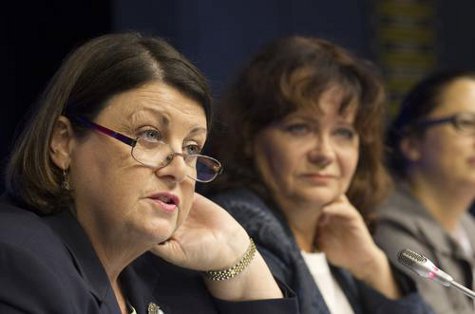
Ms Máire GEOGHEGAN-QUINN, Member of the European Commission; Ms Barbara KUDRYCKA, (right) Polish Minister of Science and Higher Education
The EU Competitiveness Council met in Brussels on Thursday 29 and Friday 30 September under the chair of Mr. Marcin Korolec, Deputy Minister of Economy, and Mrs Barbara Kudrycka, Polish Minister of Science and Higher Education. Below please find a quote from recent MEMO/11/643:
Draft Agreement on the creation of a Unified Patent Court
The European Commission and the Polish Presidency are giving high priority to patent reform. The objective is to reach agreement on a new patent system by the end of the year.
In that context, intensive work has been done to find agreement among the Member States on the basic features of the Unified Patent Court. Currently, patent litigation in Europe is fragmented and expensive. National patent courts only decide on the validity of European patents in their own territory. A patent owner needs to start court proceedings in a number of different courts in order to enforce his European patent for the same invention throughout Europe. This creates unnecessary costs as well as legal uncertainty.
To address these issues, a draft agreement for the setting up of a Unified Patent Court was developed between 2007 and 2009. However, in its Opinion in March 2011, the Court of Justice of the European Union (CJEU) raised concerns in respect of certain aspects of the draft agreement.
In May, the Commission tabled a working paper on the way forward. The paper addressed the concerns of the CJEU and met the expectations of Member States and industry. The solution suggested by the Commission was examined and endorsed by the Member States at the May Competitiveness Council. On that basis, the Hungarian Presidency tabled a revised draft agreement in June. This will be discussed at tomorrow’s meeting.
Commissioner Barnier will welcome progress made in recent weeks and stress the importance of reaching a final agreement by the end of 2011. He will highlight that reducing the costs and complexity of the existing European patent system has a substantial impact on innovation and growth.
The result was described in Document 14691/11 – PROVISIONAL VERSION – PRESSE 331 PR CO 55 as follows:
Continue reading »
The k/s/n/h::law blog
Some of the patent attorneys of the KSNH law firm have joined their efforts to research what is going on in the various branches of IP law and practice in order to keep themselves, their clients as well as interested circles of the public up to date. This blog is intended to present results of such efforts to a wider public.
Blog Archives
- November 2013 (2)
- October 2013 (1)
- September 2013 (1)
- August 2013 (2)
- July 2013 (3)
- June 2013 (5)
- March 2013 (5)
- February 2013 (4)
- January 2013 (5)
- December 2012 (5)
- November 2012 (5)
- July 2012 (5)
- June 2012 (8)
- May 2012 (5)
- April 2012 (3)
- March 2012 (4)
- February 2012 (5)
- January 2012 (6)
- December 2011 (12)
- November 2011 (9)
- October 2011 (9)
- September 2011 (4)
- August 2011 (7)
- July 2011 (4)
- June 2011 (1)
Blog Categories
- business methods (6)
- EPC (7)
- EPO (12)
- EU law (92)
- ACTA (8)
- CJEU (4)
- Comitology (1)
- competition law (2)
- Enforcement (6)
- EU Unified Patent Court (62)
- FTA India (1)
- TFEU (2)
- Trade Marks (5)
- European Patent Law (37)
- German Patent ACt (PatG) (1)
- German patent law (5)
- Germany (6)
- Pirate Party (3)
- International Patent Law (4)
- PCT (2)
- IP politics (10)
- licenses (2)
- Litigation (5)
- Patentability (7)
- Patents (12)
- Piratenpartei (2)
- Software inventions (10)
- Uncategorized (9)
- Unitary Patent (24)
- US Patent Law (4)
Comments
- kelle on Germany: Copyright Protection More Easily Available For Works Of “Applied Arts”
- Time Limits & Deadlines in Draft UPCA RoP: Counting The Days - KSNH Law - Intangible.Me on Wiki Edition of Agreement on Unified Patent Court Agreement (UPCA)
- Time Limits & Deadlines in Draft UPCA RoP: Counting The Days | ksnh::law on Wiki Edition of Agreement on Unified Patent Court Agreement (UPCA)
- Wiki Edition of Agreement on Unified Patent Cou... on Wiki Edition of Agreement on Unified Patent Court Agreement (UPCA)
- European Commission Takes Next Step Towards Legalising Software Patents in Europe | Techrights on EU Commission publishes Proposal of amendend Brussels I Regulation for ensuring Enforcement of UPC Judgements
Blogroll
- 12:01 Tuesday
- America-Israel Patent Law
- Anticipate This!
- AwakenIP
- BlawgIT
- BLOG@IPJUR.COM
- BP/G Radio Intellectual Property Podcast
- Broken Symmetry
- Class 46
- Director's Forum: David Kappos' Public Blog
- Gray on Claims
- I/P UPDATES
- IAM Magazine Blog
- Intellectual Property Intelligence Blog
- IP Asset Maximizer Blog
- IP CloseUp
- IP Dragon
- IP Watch
- IP Watchdog
- IPBIZ
- ipeg
- IPKat
- ITC 337 Law Blog
- Just a Patent Examiner
- K's Law
- MISSION INTANGIBLE
- Patent Baristas
- Patent Circle
- Patent Docs
- Patently Rubbish
- PatentlyO
- Patents Post-Grant
- Reexamination Alert
- SPICY IP
- Tangible IP
- The 271 Patent Blog
- The Intangible Economy
- THE INVENT BLOG®
- Think IP Strategy
- Tufty the Cat
- Visae Patentes
The KSNH blogging landscape


This blog and the German-language sister blog k/s/n/h::jur link to the two popular and privately run blogs IPJur und VisaePatentes and continue their work and mission with a widened scope and under the aegis of our IP law firm.
ksnhlaw on Twitter
- No public Twitter messages.
 KSNH::JUR Feed (german)
KSNH::JUR Feed (german)- Ist Verschlüsselung passé? September 6, 2013Auf verschiedenen Feldern beruflicher Praxis ist dafür zu sorgen, dass Kommunikation vertraulich bleibt. Die trifft beispielsweise für Ärzte zu, aber auch für Anwälte, darunter auch Patentanwälte. Einer der zahlreichen Aspekte, die in diesem Zusammenhang eine Rolle spielen, ist die Technik, um die Vertraulichkeit beruflicher Kommunikation sicherzustellen. Wa […]
- EU-Einheitspatent: Demonstrativer Optimismus und Zahlenmystik allerorten – Naivität oder politische Beeinflussung? June 26, 2013Nach mehreren vergeblichen Anläufen zur Schaffung eines EU-weiten Patentsystems wurde 1973 als Kompromiss das Europäische Patentübereinkommen unterzeichnet, welches unabhängig von der seinerzeit noch EWG genannten Europäischen Union System zur zentralisierten Patenterteilung mit nachgeordnetem Einspruchsverfahren durch das Europäische Patentamt schuf. Wie wi […]
- Moderne Zeiten oder: DPMA und Patentgericht streiten über die elektronische Akte April 25, 2013Bekanntlich hat das Deutsche Patent- und Markenamt (DPMA) im Jahre 2013 mit der rein technischen Fertigstellung der Einrichtungen zur elektronischen Akteneinsicht einen wichtigen Meilenstein seines Überganges von der Papierakte zur “elektronischen Akte” erreicht. Im DPMA werden aber bereits seit dem 01. Juni 2011 Patente, Gebrauchsmuster, Topografien und erg […]
- Gutachten zu Forschung, Innovation und technologischer Leistungsfähigkeit Deutschlands 2013 March 11, 2013Unter dem Datum vom 28. Februar 2013 ist die Bundestags-Drucksache 17/12611 veröffentlicht worden Sie trägt den Titel Unterrichtung durch die Bundesregierung - Gutachten zu Forschung, Innovation und technologischer Leistungsfähigkeit Deutschlands 2013. Die Bundesregierung legt dem Deutschen Bundestag seit dem Jahr 2008 […]
- 3D-Printing: Zum Filesharing von 3D-Modelldaten February 25, 2013In meiner kleinen zuvor angekündigten Reihe über rechtliche Aspekte des 3D Printing komme ich heute auf die Frage zu sprechen, ob die Hersteller von Gerätschaften es hinnehmen müssen, wenn Ersatztreile davon – vom Brillengestell über Smartphone-Gehäuseteile bis hin zu Rastenmähermotor-Abdeckungen – gescannt und die daraus […]
- Ist Verschlüsselung passé? September 6, 2013

